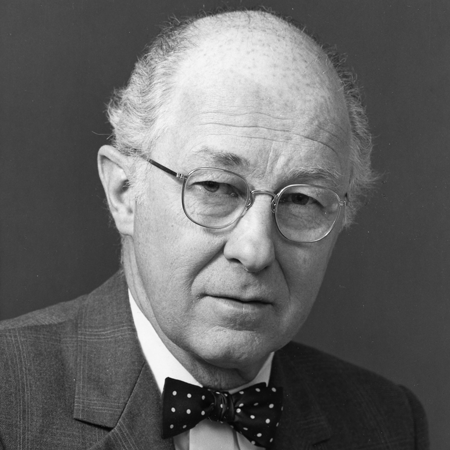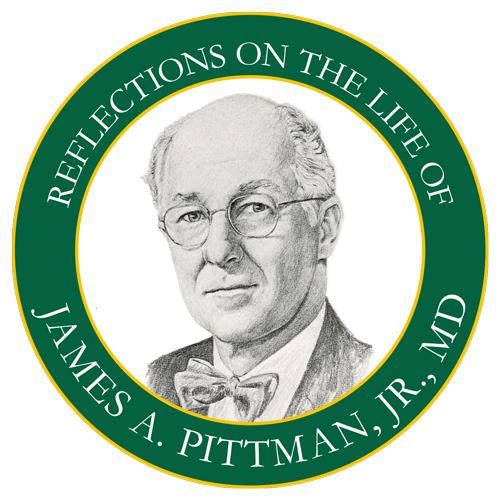
As I sit here in my office writing this, I occasionally cast my eyes toward a book that’s resting on the edge of my desk. There are times when I take a little break from my writing by opening that book and reading a few pages. I even re-read pages that I have read several times before. Because it makes me feel good just to be reminded that this book actually exists.
The book is entitled, Tinsley Harrison, MD, Teacher of Medicine. The author: James A. Pittman Jr., MD, who died on January 12, 2014, at age 86.
The book on Dr. Harrison that bears Dr. Pittman’s name as author was first unveiled in late 2014 and has an actual copyright date of 2015. After Dr. Pittman was unable to finish the book which was so important to him, there were others who joined forces to take his material, compress it and validate it and organize it and proofread it, and see to it that the book was published. Since I spoke many times to Dr. Pittman about his dreams for this book, it gladdens my heart to see it in finished form.
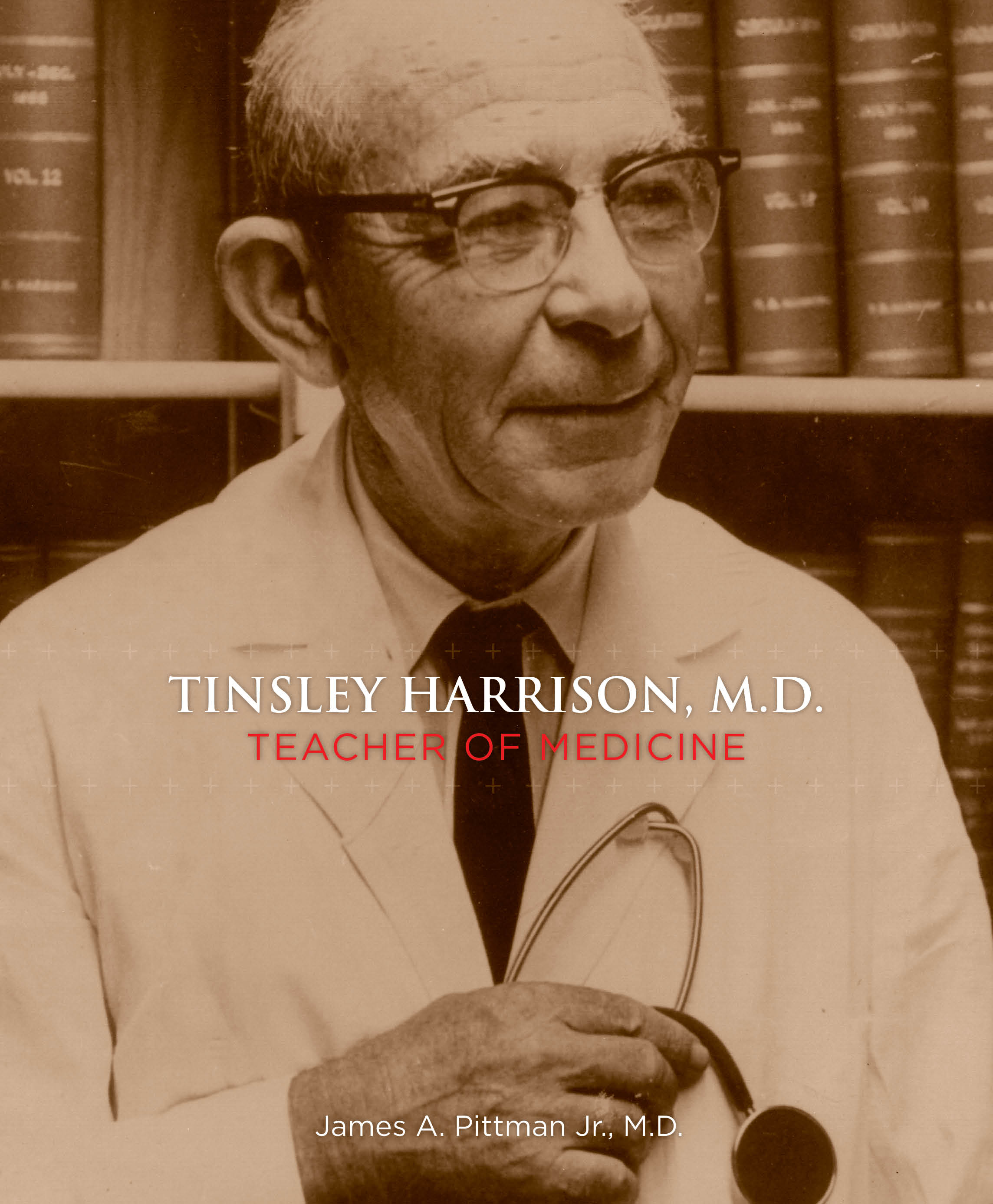 I’ve heard it said that whenever you meet someone who is an effective mentor to others, most of the time you will find that this mentor once was guided and taught by a great mentor. That was the case with Dr. Pittman, who became a great mentor. And his own mentor was the renowned medical giant Dr. Tinsley Harrison. After Dr. Pittman already had a Harvard medical degree and training from Massachusetts General Hospital and the National Institutes of Health, he came to Birmingham and became Chief Resident in the medical school’s Department of Medicine, which was chaired by the internationally known Dr. Tinsley Harrison. Dr. Pittman would come to base many of his own beliefs about patient care, teaching, and research on what he learned from Alabama native Dr. Harrison, who at one point had been dean of the same UAB medical school that Dr. Pittman later would serve as dean. Prior to Dr. Harrison’s coming to UAB, where he would spend most of his career, his reputation was already known through this outstanding work at Vanderbilt Hospital and Medical School, Bowman Gray School of Medicine, and Southwestern Medical School in Dallas. His book, Harrison’s Principles of Internal Medicine, remains a staple internal medicine resource around the globe.
I’ve heard it said that whenever you meet someone who is an effective mentor to others, most of the time you will find that this mentor once was guided and taught by a great mentor. That was the case with Dr. Pittman, who became a great mentor. And his own mentor was the renowned medical giant Dr. Tinsley Harrison. After Dr. Pittman already had a Harvard medical degree and training from Massachusetts General Hospital and the National Institutes of Health, he came to Birmingham and became Chief Resident in the medical school’s Department of Medicine, which was chaired by the internationally known Dr. Tinsley Harrison. Dr. Pittman would come to base many of his own beliefs about patient care, teaching, and research on what he learned from Alabama native Dr. Harrison, who at one point had been dean of the same UAB medical school that Dr. Pittman later would serve as dean. Prior to Dr. Harrison’s coming to UAB, where he would spend most of his career, his reputation was already known through this outstanding work at Vanderbilt Hospital and Medical School, Bowman Gray School of Medicine, and Southwestern Medical School in Dallas. His book, Harrison’s Principles of Internal Medicine, remains a staple internal medicine resource around the globe.
For years after Dr. Pittman retired from the deanship, he devoted many hours to working on his biography of Dr. Harrison. He collected voluminous amounts of material. He labored over the validation of his research by creating an army of footnotes, some finished and others in progress. He wrote many pages of copy, some of it in sequence and much of it out of sequence. He made numerous notes, in margins of his copy and on other scattered bits of paper, about details he wanted to check or add to his ever-expanding manuscript.
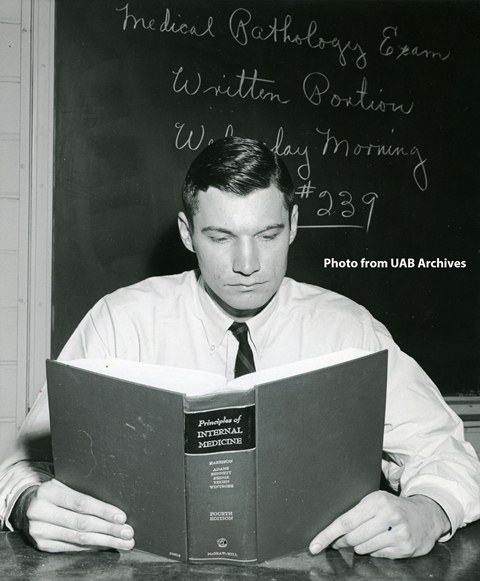 John Harris reading Tinsley Harrison's Principles of Internal Medicine, 1964But it was not to be that Dr. Pittman would ever see his book project completed. Even before the brutal stroke-inflicted damage, Dr. Pittman had run into roadblocks in finishing his cherished project. In my opinion, when it came to his writing about Dr. Harrison, that active mind of Dr. Pittman’s that had helped him accomplish so much had in one sense become his enemy. Dr. Pittman’s mind simply held more material on Dr. Harrison than he could corral and organize into one book. He had way too much material, and Dr. Pittman was painfully aware of that. He told me, “I’ve just got too much stuff here!” Yet, as is true for many writers, it was difficult to impossible for Dr. Pittman to turn loose of any of this material. He needed help.
John Harris reading Tinsley Harrison's Principles of Internal Medicine, 1964But it was not to be that Dr. Pittman would ever see his book project completed. Even before the brutal stroke-inflicted damage, Dr. Pittman had run into roadblocks in finishing his cherished project. In my opinion, when it came to his writing about Dr. Harrison, that active mind of Dr. Pittman’s that had helped him accomplish so much had in one sense become his enemy. Dr. Pittman’s mind simply held more material on Dr. Harrison than he could corral and organize into one book. He had way too much material, and Dr. Pittman was painfully aware of that. He told me, “I’ve just got too much stuff here!” Yet, as is true for many writers, it was difficult to impossible for Dr. Pittman to turn loose of any of this material. He needed help.
Dr. Pittman consulted a number of people about what he should do. I was among those he consulted. One day, he brought some his completed writings on Dr. Harrison to my office. He couldn’t bring all the material. I am in a second-story office, with no elevator. For him to have lugged all his Harrison material up those steps would have been quite a task.
So he brought some “samples,” as he called them. He asked me to read them and tell him what I though. I did that. He and I talked he asked if I could help by becoming an editor for his project. At that time, I was covered up in book-related work to which I already was committed for a couple of clients. And there were also other issues that I felt did not make me a good candidate to become involved in Dr. Pittman’s book project at that juncture. I respected Dr. Pittman so much and had known and admired Dr. Harrison – factors that for me would have made it difficult to select the amount of material that needed to be cut or repositioned. If I had become involved, I fear that in some areas I would actually have suggested adding a bit of material – the last thing that was needed. Too, I felt so much respect for Dr. Pittman that I fear I would have been ineffective in pushing hard enough when I needed to convince him to discard something. All things considered, I felt that Dr. Pittman’s first stop for help at that point should be with someone who had strong abilities but who also could look at this project with a fresh view. In effect, I felt the project could benefit from an expert editor and publisher who had not known Dr. Harrison and who didn’t really know Dr. Pittman well.
So I concluded that my contribution needed to be in the form of advice. I said, “Dr. Pittman, go to Randall Williams, co-owner of NewSouth Books, the publishing house in Montgomery. Randall has been involved with some books I have written. Randall is an accomplished writer and editor; he loves and hnows history; he can help you.”
He contacted Randall. Then came another stumbling block: Dr. Pittman’s health began to decline quickly and drastically, several years later leading to his death.
However, thanks to many, Dr. Pittman’s long-running, mammoth Dr. Tinsley Harrison project survived. Several have played significant roles in working with Randall to bring this project to fruition. It’s finished; NewSouth published it. And every time I pick up that book, I know that my hands are holding something special. The book is a strong tribute. In my view, the book now stands as a lasting “double tribute” – to the Great Mentor Dr. Tinsley Harrison, and also to his mentee, The Great Mentor Dr. Jim Pittman.
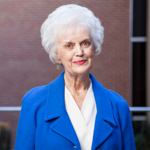 Anita Smith operates a Birmingham-based writing company, Anita Smith and Company, Inc. She specializes in writing about health and business and has written several nonfiction books about health-related institutions and distinguished health professionals. She has been named a Distinguished Alumna of what is now the University of Alabama College of Communication and Information Sciences. She is the first journalist inducted into the Alabama Healthcare Hall of Fame (2014).
Anita Smith operates a Birmingham-based writing company, Anita Smith and Company, Inc. She specializes in writing about health and business and has written several nonfiction books about health-related institutions and distinguished health professionals. She has been named a Distinguished Alumna of what is now the University of Alabama College of Communication and Information Sciences. She is the first journalist inducted into the Alabama Healthcare Hall of Fame (2014).